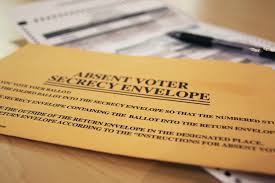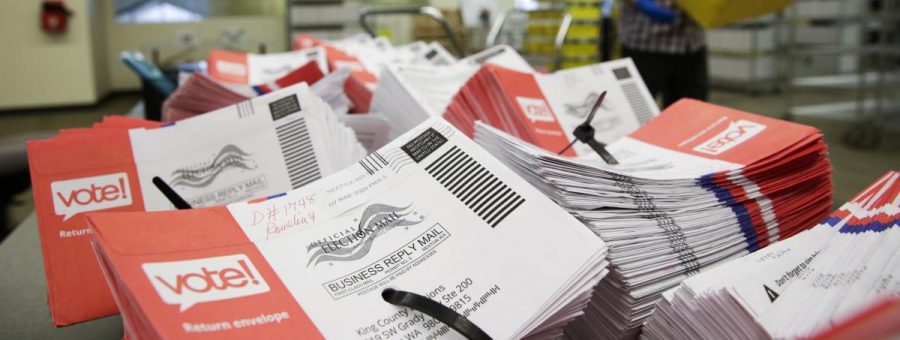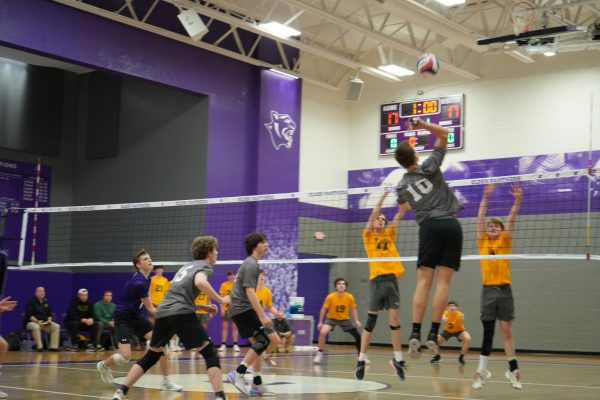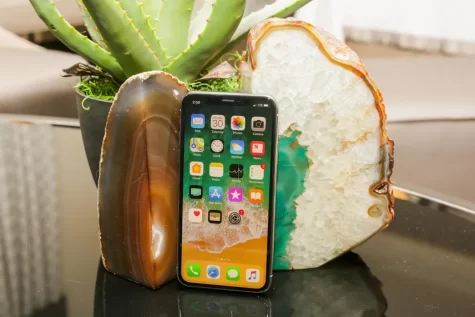Mail-in voting raises security concerns
The recent push for extensive mail-in voting has called into question the reliability and safety of the system.
Source: The Heritage Foundation
In many states, politicians are fearful of voter fraud with the use of mail-in ballots.
With the most polarized election in United States history less than two months away, it is in the country’s best interest to ensure the security of voting. Democrats and Republicans both have different views as to how voting should be conducted in November, leaving most states to decide for themselves how their citizens will cast their votes. However, the major controversy that is plaguing the government is whether or not mail-in voting is secure and reliable.
Before I get into all this, let me explain the difference between absentee balloting and mail-in voting. Absentee balloting requires a citizen to request a ballot from their state government, so that they are able to vote remotely. With the mail-in voting system, a ballot is sent to every registered voter in the state, even without their request.

I have no issue with absentee balloting. It is a necessity for citizens who are unable to make it to their polling place on Election Day, for any reason. In addition, it is critical for at-risk citizens during this global pandemic to ensure that their votes can be cast safely.
I do have an issue with mail-in voting. While it seems like a great idea that every citizen would be able to cast their vote from the safety of their own home, it is not that simple. Recent news reports have shown that ballots are not only being sent to living citizens of the United States, but deceased citizens as well. While this may sound like an innocent mistake, it can potentially open the door to fraud.
In a recent Washington Post article, Bradley Schiller argues that although ballots will be sent to dead people, there is little reason to panic because the risk of voter fraud is low. Schiller states that ballots will be sent to dead people, but fraud would only be able to occur if third-parties got a hold of the ballots and sent in fraudulent votes, and that the risk of that happening is very low. This is a very strange argument. Just because the risk is low, does that mean it could not happen? As I stated above, this is the most polarized election our country has ever seen. Who is to say whether or not people will go to the extremes to ensure that their candidate will win?
This is going to be a tight election. The odds that either Biden or Trump wins in a landslide are extremely low, compared to the probability that it comes down to a few key states. Therefore, it is best that every vote is counted, so that the results of the election are fair and accurate. Recently, the contributing Editor for the National Review Online explained that with the estimated 80 million expected mail-in ballots, around 3.2 million could go missing.
/cloudfront-us-east-1.images.arcpublishing.com/sltrib/BUBNRAA37FFW3F363QUER4DEWM.jpg)
This is an extremely alarming prediction. 3.2 million is just slightly less than the population of the entire state of Utah. While this is technically not considered voter fraud, it should distress every American voter that the results of this election could be wildly inaccurate.
I thought it would be best to get the opinion of an elected official, so I spoke to Dr. Wahlert, history teacher at Elder High School and a Trustee of Colerain Township in Ohio. One question that I asked him was if he thought mail-in voting could result in fraud. “I am concerned about the vote-by-mail, I’m not concerned about the absentee. To me, the two-step process helps ease my concerns a little bit,” Wahlert said.
I also brought up the idea of a delay in time before the country is aware of the winner, possibly lasting days; weeks; or even months, due to widespread mail-in voting. When asked about the possibility of this, Wahlert told me, “I think Ohio’s not going to have results until maybe four, five, six days after.” He explained to me that he recently received data that indicated that Ohio is ready to print over 70,000 mail-in ballots for this election, a stark contrast to the 6,000-7,000 absentee ballots that were requested, at this point in time, for the 2016 Election.
I then asked Wahlert how he thinks the results will come out, and if the losing side will accept them. “Gone are the days of the losing candidate calling the presidential-elect the night-of and saying you did a good job. I honestly think it’ll be fought-out in court.”
Although the odds of both parties coming to an agreement on how to conduct voting in November are very low, I think every American would agree, despite your political beliefs, that it would be nice for our leaders to come to a compromise on how Americans can safely and securely vote. Not enough is known about universal mail-in voting, especially on a nationwide scale, for it to be considered a safe, secure, and reliable means of voting. Therefore, it is critical that government officials and citizens are aware of the risks of potential fraud and millions of lost votes that could occur with large-scale mail-in voting.

"Whoa, woah...Lois, this is not my Batman glass" - Peter Griffin














